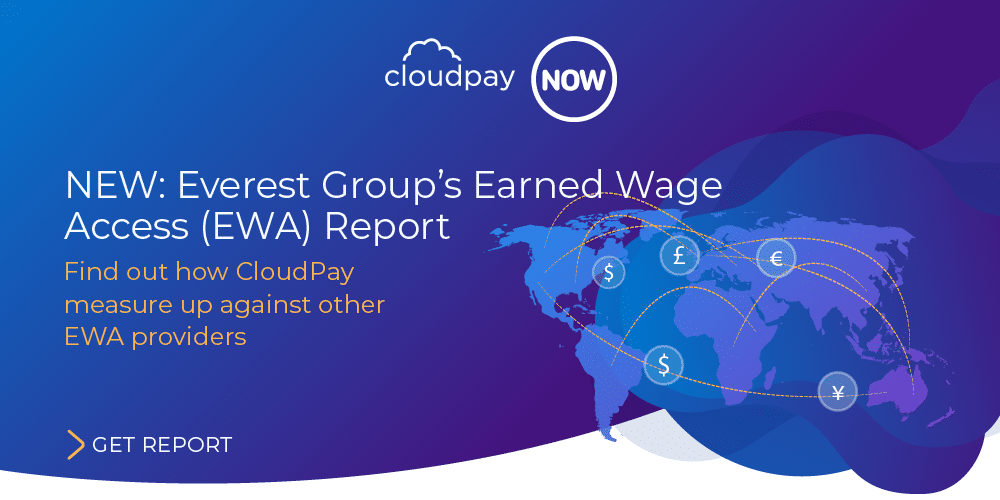The workplace has undergone massive change in the past couple of years, a transformation that is having a widespread impact on employee engagement, labor, and wages. Trends like the Great Resignation and quiet quitting were born in part from an increased demand for greater welfare and fairness in the workplace, and this sentiment is also leading to a renewed focus on pay parity. This means ensuring that all employees in the same job role and location have equal pay, regardless of ethnicity or gender.
Pay parity is the future and many organizations, such as Adobe, are getting ahead of the curve by committing to global pay parity. Of course, it’s hard to defend any pay policy as fair if it suggests one worker is more deserving than another when performing the same function.
Pay parity is vital when you’re planning to build a futureproof, equitable and diverse workplace. If employees are not treated equally and fairly, they’re likely to feel less motivated, leading to poorer performance. A lack of pay parity can erode their confidence and undermine their loyalty in their employer. They’ll likely start to look elsewhere, increasing staff turnover and recruitment costs. And when recruiting, it’s harder to attract the right people if there’s an explicit disparity in pay.
Dissatisfied employees can really affect whether a business thrives, so now’s the time to start thinking about how your organization can implement pay parity. This blog looks at how to achieve global parity and why it can benefit your business.

Four simple steps to achieve global parity
1. Implement a fair and flexible pay policy
Take a good look at your existing salary structure, making sure to consider all departments and levels. Check salaries against one another, paying attention to gender, age and experience. This is the time to ensure you close any pay gaps and ensure that each individual team member is paid fairly.
An important element in embracing pay parity is to give all global employees equal and flexible access to their pay. One great way to do this is by implementing global Earned Wage Access. Earned Wage Access, or on-demand pay, simply and effectively puts each employee in control of how and when to access and spend their pay, giving them greater flexibility and autonomy. Through a cloud-based solution, they can access their pay, see how it accrues on a daily basis and withdraw what they need, when they need it, without waiting for a monthly payday.
2. Create a truly inclusive culture
Whoever they are and whatever their gender, ethnicity, strengths and weaknesses, disabilities or challenges, every employee needs to feel welcome, valued and included, especially by senior management. Build mutually trusting relationships by listening to your employees and ensuring their voices are heard when making decisions. Encourage open dialogue and idea sharing between teams and across departments, and show employees you care by establishing employee wellbeing initiatives. Fostering an atmosphere of inclusivity, respect, and collaboration can help you to identify where there may be inequality in your business structure so you can take steps to resolve it.
3. Offer opportunities for mentorship and professional development
Mentoring can really help to empower and educate employees to gain skills and feel ready to take on new roles and responsibilities. When taking on new employees, you can help them identify their aspirations and select an experienced and appropriate mentor who can work with them toward their career goals.
Offering professional development opportunities is another great way to encourage diversity and retain talent. It shows that you’re willing to invest in your people and their future, as well as help to make your workplace more inclusive and equitable.
4. Evaluate your recruitment process
It’s important to ensure that there are fair and equal opportunities for every candidate across the whole hiring and selection process. According to 2018 McKinsey research, businesses with a healthy balance of women and men are 21% more likely to outperform their competitors, rising to 33% for companies with employees from a mix of ethnic backgrounds.
Crucial to building a diverse, inclusive team is a transparent hiring process. Educate your hiring team to avoid unconscious bias, whilst encouraging them to assess candidates clearly against desired and essential skills and experience. And ensure your hiring team is composed of a diverse group of individuals.
Many candidates are uncomfortable negotiating, so set a salary and offer it transparently and openly, so they know what to expect without having to haggle.
In summary
All global businesses should be working towards global pay parity. With a firm commitment to equality, diversity and inclusion, your organization can build a happier, more motivated workforce, who are satisfied that you are working in their best interests. This can help to attract top talent, as well as reduce recruitment and onboarding costs by boosting employee retention.
Additional incentives such as EWA are an important part of this. Employees can improve their productivity and reduce stress by no longer having to ‘wait’ for payday. As a solution that works for all employees, whoever they are and wherever they’re located, it’s a helpful step toward equality.
Read the Everest Global EWA report to learn more about the difference Earned Wage Access can make.


